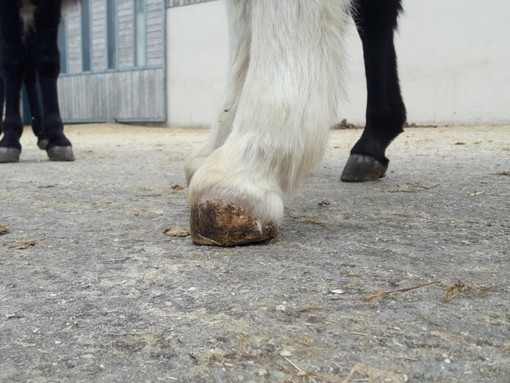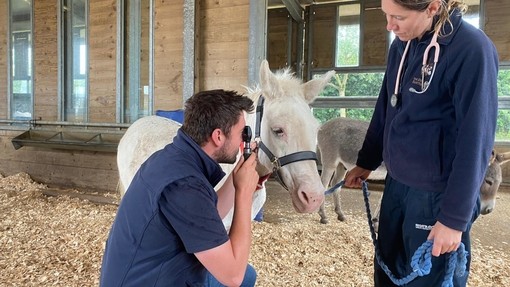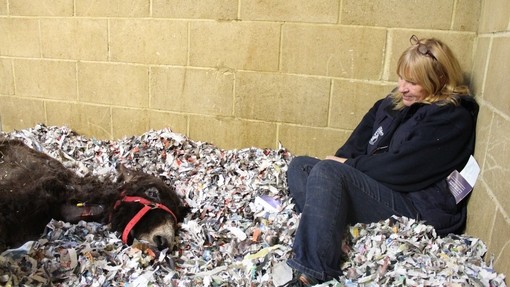
Understanding Ballerina syndrome and how to manage it
Ballerina syndrome is a condition that causes donkeys to be unable to fully weight bear through their hoof surfaces, making them stand on their toes instead.
We caught up with Lead Veterinary Surgeon, Emma O’Hagan, to get a better understanding of the condition.
Where does the ‘ballerina syndrome’ name come from?
The name originates from severe cases where the donkey rises on their toes like a ballerina.
How rare is the condition among donkeys?
As far as I am aware, there has not been a study looking at the prevalence of ballerina syndrome in donkeys. In the UK, it is most likely to be seen as a congenital condition or in young donkeys that are rapidly growing, but we can also see it in geriatric donkeys with chronic foot pain.
Christian’s trip to the hospital
Christian was born with contracted tendons in both his front legs, forcing him to walk on his toes. Our team of expert vets tried to manage the condition medically, but ultimately in 2014 he needed surgery to cut the tendons in both of his front legs to enable him to walk freely.
Over time the tendon of his right front leg joined together and scarred, leading to a recurrence of the condition - a common complication. This meant that he had to return for a second surgery and spend a couple of weeks at the hospital.
He recovered beautifully from both surgeries with best friend Ashley by his side. Our state-of-the-art donkey hospital is designed to allow donkey companions to stay together, so Ashley remained by Christian’s side throughout his stay.

How unusual is it for our vets to treat or operate on donkeys with the condition?
Luckily our experienced grooms, farriers and vets pick these cases up early and manage them without surgery. Donkeys naturally have a more upright hoof-pastern axis than a horse (making their foot look naturally more club-like), so it can be hard to detect these cases early.
In mild cases, especially in young growing animals, we can usually correct the deformity through farriery, stretches and analgesia. Surgery is usually only needed in severe or chronic cases where the front wall of the hoof goes beyond the vertical, and the heel raises off the ground.
What are the main challenges when treating a donkey with the condition?
The main challenge is that there is no quick fix, and it can take many months of daily exercises and regular farrier visits to correct the deformity slowly. For example, even now that Casey’s deformity is corrected because he is young and still growing, we must continue to manage his feet with more regular trims than the rest of the donkeys to make sure the deformity does not return.
Casey the foal
Casey was born with ballerina syndrome and could only walk on the tips of his toes. Without treatment, he would have been unbalanced and susceptible to falling over throughout his life.
A programme of stretching, physiotherapy and remedial farrier work helped to transform his life. He has also been fitted with some special shoes to help prevent the ballerina syndrome from returning.
Thanks to our wonderful supporters and the persistence and expertise of our veterinary team, he is now able to trot around with ease and play with his buddies.

Share this page
Tags
- Blog









